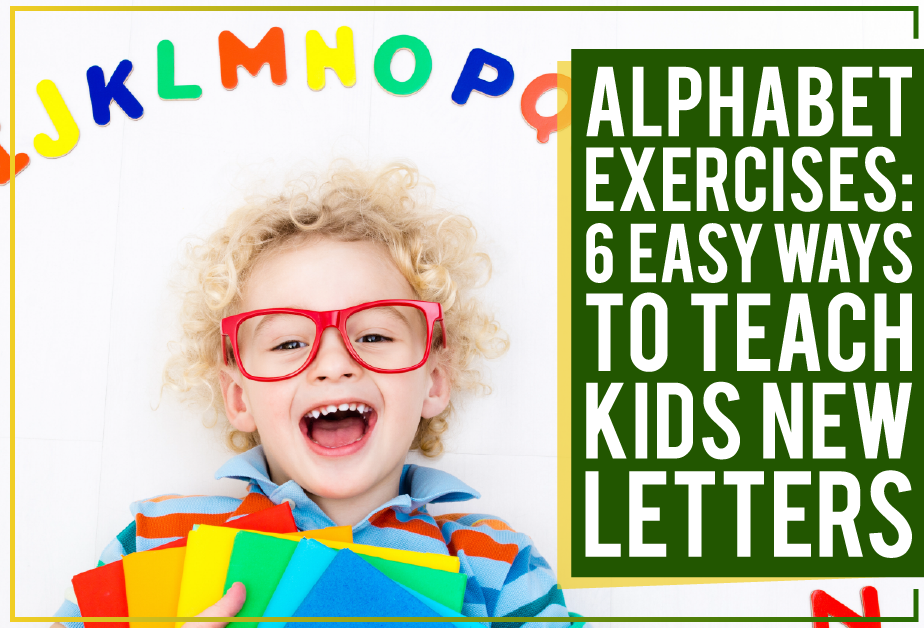Alphabet Exercises: 6 Easy Ways to Teach Kids New Letters
A child's first experience learning their ABCs can be quite magical. It’s an exciting milestone for kids. If you are looking for ways to teach your kids new letters, there are plenty of fun and engaging alphabet exercises that children will enjoy.
It's important to keep in mind that many people learn to read by sounding out words, rather than memorizing a list of letters and sounds. Some children may not need formal lessons to learn their letters at all. With this in mind, we will discuss a variety of fun activities that you can do with children to help them learn about the alphabet and the sounds each letter makes.
Alphabet Exercises that Help Kids Learn Their Letters
Here are some activities your children will enjoy. It’s easy to turn these exercises into a game that kids will look forward to!
1) Make an alphabet book
If your child is young, you might want to have them trace each letter. Then let your little one color each letter, or draw a picture of something that starts with each letter of the alphabet. When children complete all of the letters, staple the pages together in a book. This activity is also great for older kids who would benefit from practice writing letters. For this version of an alphabet book, just print out 26 pages that contain only lowercase letters (one page per letter), then show your child how to put them all together to create a book.
2) Puzzle Land
Cut out shapes from construction paper that look like puzzle pieces. These could represent each letter of the alphabet, or they could be shapes that represent a word that starts with each letter. Show children how to put together "Puzzle Land," then have them take turns taking a trip through puzzle land by putting the pieces in order, from A to Z, (or from a word that starts with A to a word that starts with Z.)
3) Alphabetical order
This is an easy way for kids to remember where letters go in relation to one another. You can start these alphabet exercises by writing all of the letters of the alphabet on index cards, and lay them face down on a table. Have your child turn over two cards at once, and then place them correctly next to each other, based on alphabetical order. Once children have turned over all 26 cards, they will have successfully placed them in the correct alphabetical order.
4) Alphabetical order race
Divide your child's toy collection into two groups, one for each letter of the alphabet. Have your child pick a group and try to place all the toys in the correct order from A to Z. If children struggle with this activity at first, you can play a memory game first to make it easier and more fun by mixing up the toys and having them turn them over one at a time. Once the toys are back in alphabetical order, it will be easier for your child to figure out where they go.
5) Alphabet exercise with animal names
Write down the names of various animals on individual index cards. Turn the cards face down, then take turns picking two at a time and trying to make a sentence using words that start with the first two letters of each animal (for example, for ”B” you might say, "Ben the pig likes bananas.) When children come up with a correct sentence, they can keep those cards and pick another combination. Whoever has collected more pairs at the end wins.
6) Alphabet hunt
Scatter all 26 index cards around your house. Have your child collect them in order by finding one card at a time. Then ask them to look for the next one closest to it in alphabetical order until they have found all 26 in order from A to Z. You can also play this game by having your child race against an opponent. Invite your child’s siblings, other adults, or your child’s friends to participate in the hunt.
Keep your little ones engaged and learning with these six easy ways to teach kids new letters. From our alphabet exercises for kids to high-quality children's books that will ignite their imagination, you'll find everything they need to get excited about their education.
Our programs incorporate a variety of alphabet activities that enrich each emerging young reader's foundational skills. Call Mrs. Myers' Reading Room for more information.





